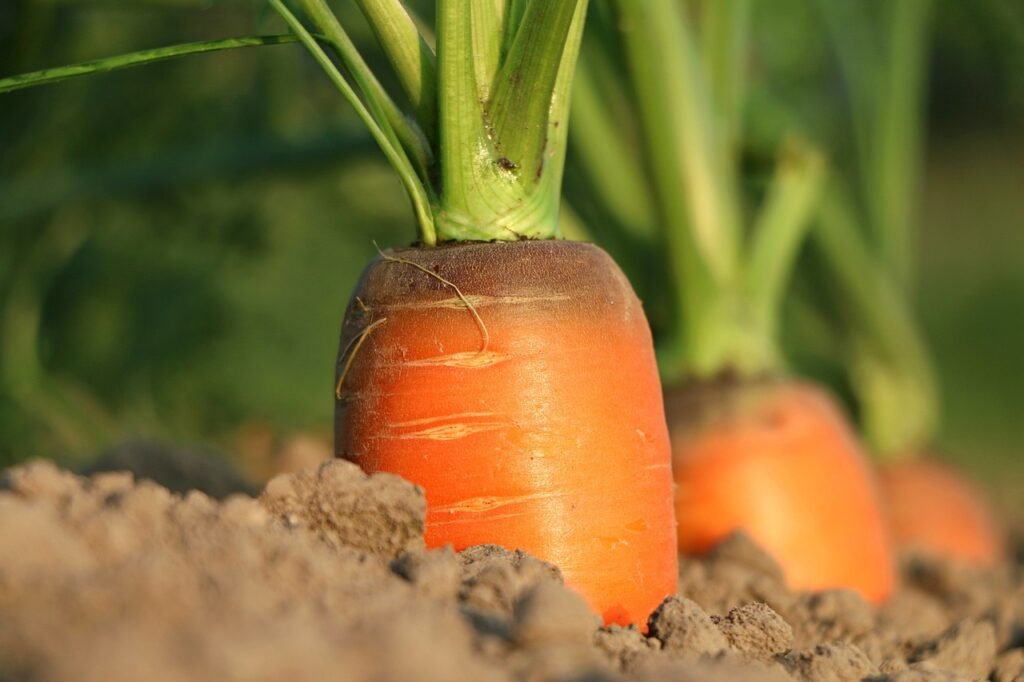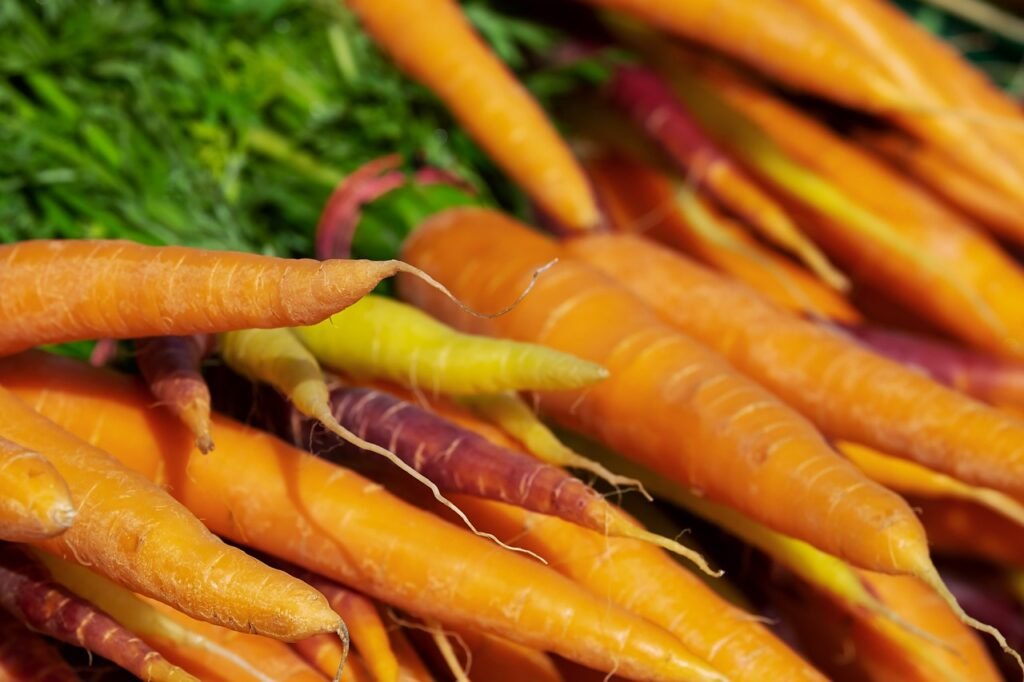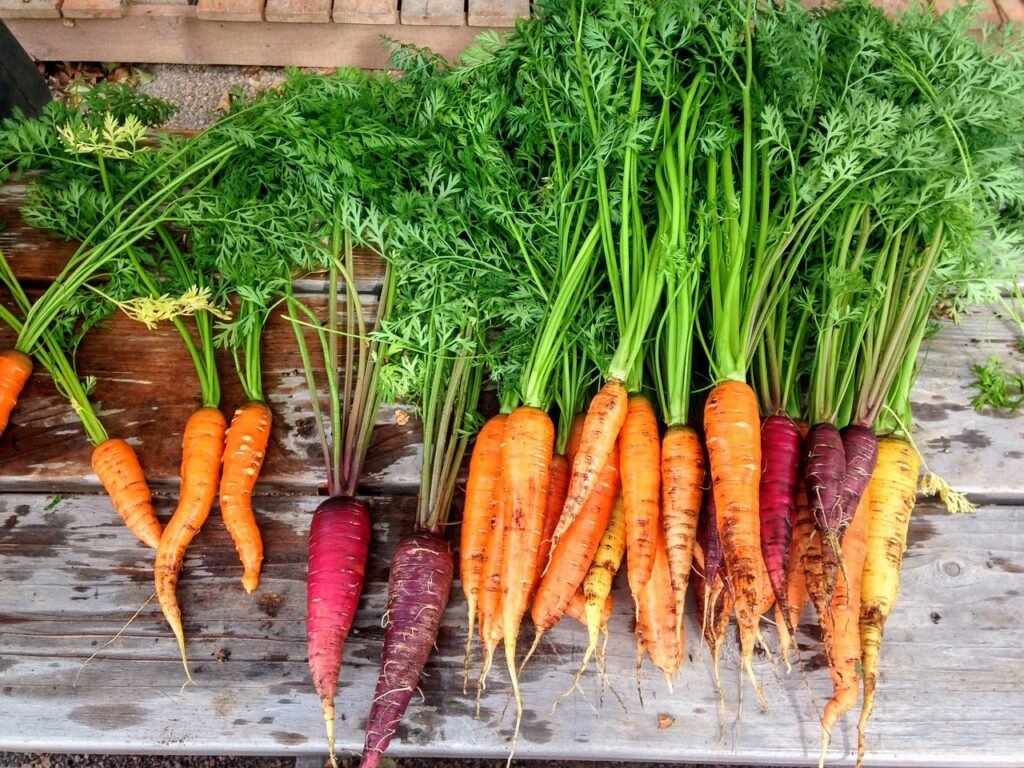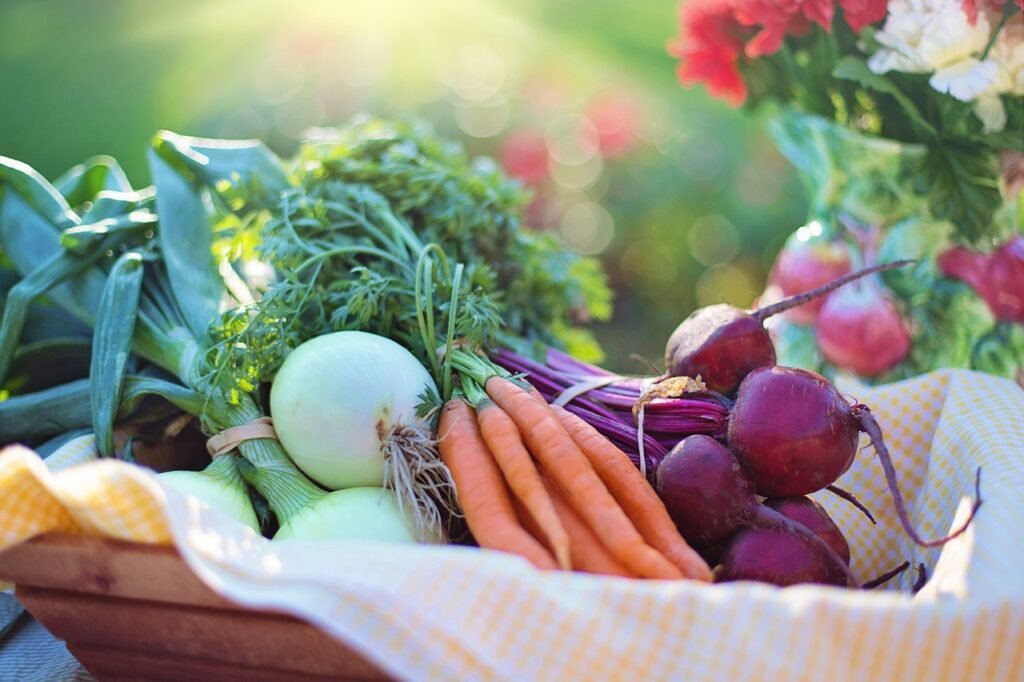Carrot Growing Guide From Seed To Harvest To Health Benefits
.jpg)
Interested in growing your the versatile carrot but not sure where to start?
This guide will take you through the entire process from planting carrot seeds to harvesting and even exploring the health benefits of this root vegetable.
Discover the best growing conditions, how to prepare the soil, when and how to plant seeds, caring for seedlings, harvesting techniques, and storing tips.
Get ready to enjoy the satisfying experience of growing and eating your own fresh, nutrient-rich carrots.
How to Grow Carrots from Seeds?
Growing carrots from seeds is a rewarding experience that requires proper planning and care to ensure a successful harvest.
- To start the process, it is essential to select high-quality carrot seeds that are well-suited to the local climate and soil conditions.
- When preparing the soil, make sure it is loose, well-draining, and free of rocks or debris that may obstruct root growth.
- Plant the seeds in rows, spacing them apart to allow the roots to develop properly.
Watering is crucial, especially during the germination stage, to keep the soil consistently moist. As the carrots grow, maintain a regular watering schedule to prevent the soil from drying out. Applying a balanced fertilizer when the plants reach the early growth stages can help promote healthy foliage and root development.

What are the Best Growing Conditions for Carrots?
Carrots thrive in cool climates with well-drained soil, ample sunlight, and consistent moisture levels.
Understanding the ideal growing conditions for carrots is essential to ensure a successful harvest. Carrots are cool-season vegetables that prefer temperatures between 60-70°F, making them well-suited for spring and fall plantings.
They require at least 6 hours of sunlight daily to promote healthy growth and development. When it comes to water, carrots need consistent moisture to prevent them from becoming tough or bitter. Proper irrigation practices, such as regular watering to keep the soil evenly moist but not waterlogged, are crucial for optimal carrot production.
How to Prepare the Soil for Planting Carrots?
Preparing nutrient-rich soil is essential for planting healthy carrots that develop well-formed roots.
- One of the key steps in soil preparation for carrots is ensuring the soil structure is loose and well-draining. Carrots require loose soil to grow straight and develop uniformly-shaped roots. To achieve this, gardeners can incorporate organic matter such as compost or aged manure into the soil. These organic amendments help improve soil texture and provide essential nutrients that promote healthy root development.
- Monitoring the pH levels of the soil is crucial as carrots prefer a slightly acidic soil with a pH range between 6.0 and 6.8. By maintaining proper soil pH and integrating organic methods, gardeners can create an optimal environment for growing robust and flavorful carrots.
Choosing A Carrot Variety
Selecting the right carrot variety to cultivate can greatly enhance your gardening experience and culinary outcomes. Carrots come in a spectrum of colors, sizes, and flavors, suitable for various climates and soil types. Classic orange varieties like ‘Nantes’ and ‘Imperator’ are beloved for their sweetness and crisp texture, ideal for snacking and cooking.
For those seeking a burst of color, ‘Purple Haze’ offers deep purple exteriors with vibrant orange interiors, adding a visual pop and nutritional boost to dishes. Shorter varieties such as ‘Parisian’ are perfect for growing in shallow or rocky soil, producing small, round, and flavorful carrots.
Adventurous gardeners might explore ‘White Satin’ for its unique color and mild flavor. Each type brings its own charm to the garden and kitchen, allowing gardeners to experiment and discover their preferences through diverse flavors and textures.

When and How to Plant Carrot Seeds?
Carrot seeds should be sown directly into the garden bed in early spring after the last frost date, with proper spacing to facilitate healthy growth.
Aim for a sowing depth of about 1/4 to 1/2 inch, covering the seeds lightly with soil. Carrots thrive in loose, well-draining soil, so ensure the bed is prepared accordingly. Water the seeds gently after planting to ensure they are moist but not waterlogged.
Germination typically occurs within 1-3 weeks. Once the seedlings emerge, thin them to 2-3 inches apart to allow room for the carrots to develop fully. Regularly water the seedlings, keeping the soil consistently moist but not saturated, to support healthy growth.
How to Care for Carrot Seedlings?
Proper care for carrot seedlings involves regular watering, vigilant pest management, and disease prevention measures to ensure healthy growth.
When it comes to watering carrot seedlings, it’s crucial to maintain consistent moisture levels in the soil without overwatering. Carrots prefer evenly moist soil, so water deeply but infrequently to encourage strong root development. Keep an eye out for common pests like carrot rust fly and aphids, which can wreak havoc on carrot plants.
To control these pests organically, consider introducing beneficial insects like ladybugs or using neem oil spray. Disease resistance in carrots can be enhanced by planting in well-draining soil and practicing crop rotation to minimize the risk of fungal infections.
How to Harvest and Store Carrots?
Harvesting and storing homegrown carrots ensures a fresh supply of this nutritious root vegetable for your culinary endeavors.
- When harvesting carrots, it is essential to look for signs of readiness such as a bright orange color and a diameter of about half to three-quarters of an inch.
- To harvest, gently loosen the soil around the carrot with a fork or trowel, being careful not to damage the root.
- Once harvested, trim the green tops, leaving about an inch to maintain freshness.
- For post-harvest storage, carrots can be stored in a container filled with damp sand or wrapped in a damp cloth in the refrigerator to maintain their crisp texture and flavor.

When are Carrots Ready to Harvest?
Carrots are ready for harvest approximately 60-80 days after planting, depending on the variety and growing conditions.
When determining the optimal harvest time for carrots, it is crucial to assess several maturity indicators.
- Size is a significant factor, with mature carrots typically reaching 7-9 inches in length and about 1 inch in diameter.
- Color plays a vital role; look for a vibrant orange hue for most carrot varieties.
- Another key indicator is texture – ensure that the carrots are firm and crisp.
Consider the seasonal influences as well, as fall harvests may need to be completed before the first frost. Harvesting techniques such as gently loosening the soil around the carrots before pulling them out can help ensure minimal damage and the best quality produce.
How to Properly Harvest Carrots?
Harvesting carrots requires gentle handling and the use of suitable gardening tools to avoid damage to the roots.
When it comes to harvesting carrots, it’s crucial to approach the task with care and precision to ensure that the roots remain intact and undamaged. One of the key techniques for gentle handling is to loosen the soil around the carrot before pulling it out, allowing for a smoother extraction.
Choosing the right tools is also essential in this process. Tools such as a hand trowel or a garden fork can help lift the carrots out of the ground without causing unnecessary strain on the roots. By employing these proper techniques and selecting the appropriate gardening tools, you can harvest your carrots efficiently while protecting their delicate roots.
How to Store Carrots for Long-Term Use?
Storing carrots correctly in a home garden or homesteading environment can extend their shelf life and preserve their nutritional value.
One key aspect of storing carrots for long-term use is ensuring they are stored in a cool, dark place with high humidity to prevent wilting. Ideal storage conditions for carrots involve keeping them in a root cellar or a refrigerator with temperatures ranging from 32-40°F.
To maintain their freshness, it’s advisable to remove the carrot tops before storing as they can pull moisture from the roots. Homegrown storage not only guarantees a fresh supply of carrots but also allows you to bypass commercial preservation methods, ensuring a pesticide-free and organic product.

Health Benefits of Eating Carrots
Eating carrots offers a plethora of health benefits due to their rich nutrient content, especially in vitamin A, beta-carotene, and antioxidants.
These vibrant orange root vegetables are known for their significant contribution to eye health, as their high vitamin A content helps maintain good vision and may reduce the risk of age-related macular degeneration.
Carrots are also packed with powerful antioxidants like beta-carotene, which play a key role in neutralizing harmful free radicals in the body, thus supporting the immune system and reducing inflammation. Including carrots in your diet can not only enhance your overall well-being but also provide a delicious and versatile addition to nutrient-rich foods.
What Nutrients are Found in Carrots?
Carrots are a nutrient-dense vegetable rich in essential vitamins and minerals, with a particular emphasis on vitamin Aand beta-carotene.
Vitamin A is crucial for maintaining healthy vision, boosting the immune system, and promoting overall skin health. Beta-carotene, a provitamin A compound found in carrots, converts to vitamin A in the body, providing antioxidant benefits that protect cells from damage.
In addition to vitamin A, carrots contain significant amounts of potassium, fiber, and vitamin K1, which supports blood clotting and bone health. These nutrients work together to support various bodily functions, making carrots a valuable addition to a balanced diet.
How Do Carrots Benefit Your Health?
Carrots offer numerous health benefits, including antioxidant properties that protect cells from damage and support overall well-being.
Rich in beta-carotene, an antioxidant that converts to vitamin A in the body, carrots play a crucial role in maintaining healthy vision. The high fiber content in carrots aids digestion and promotes gut health. Regular consumption of these vibrant vegetables may also help lower cholesterol levels, reducing the risk of heart disease. The combination of vitamins and minerals found in carrots contributes to a strengthened immune system, providing protection against various illnesses.

What Are Some Ways to Incorporate Carrots into Your Diet?
Carrots can be enjoyed in a variety of delicious dishes, from savory recipes to refreshing juices, offering versatility in culinary creations.
Their natural sweetness makes them a perfect addition to salads, providing a crisp and vibrant crunch.
Carrot soup is a comforting winter staple, where the earthy flavors of the carrot shine through when blended with warming spices like ginger and cumin.
For a healthful boost, try incorporating carrots into your morning smoothie for added vitamins and antioxidants.
Juicing carrots with apples and ginger can create a zesty and nutrient-packed beverage to kickstart your day.
Carrot Growing Guide Wrap Up
Embarking on the journey of growing carrots opens up a world of gardening delight and culinary creativity. From the sweet, classic orange varieties to the intriguing hues of purple and white, each carrot type brings its unique flavor and nutritional benefits to your table. To further enrich your gardening adventures and culinary skills, we invite you to dive deeper into our resources.
Visit our blog for comprehensive guides on a wide array of vegetables, subscribe to our newsletter for the latest tips and trends, and explore our detailed growing guides. Join our community at Garden Guys, where we’re dedicated to helping you cultivate a flourishing garden and savor the fruits of your labor. Let’s grow together, turning your garden into a vibrant tapestry of tastes and colors.
Frequently Asked Questions
Carrot seeds should be planted in the early spring, once the soil can be worked and is not too wet. This is typically around mid to late April, depending on your location.
Carrot seeds should be planted about 1/4 inch deep in loose, well-drained soil. It’s important to not plant them too deep, as they need sunlight to germinate.
Carrot seeds should be kept consistently moist during the germination period. After they have sprouted, they should be watered deeply once or twice a week, depending on weather conditions.
Carrot seedlings should be thinned out when they are about 2-3 inches tall. This allows enough space for the carrots to grow and prevents them from competing for nutrients.
Carrots are packed with nutrients and are known for their high levels of beta-carotene, which is converted into vitamin A in the body. They also contain fiber, potassium, and antioxidants, making them a great addition to a healthy diet.
Yes, you can grow carrots in containers as long as the container is deep enough for the carrots to grow. Be sure to choose a variety that is suitable for container growing and provide them with enough sunlight and water for optimal growth.



